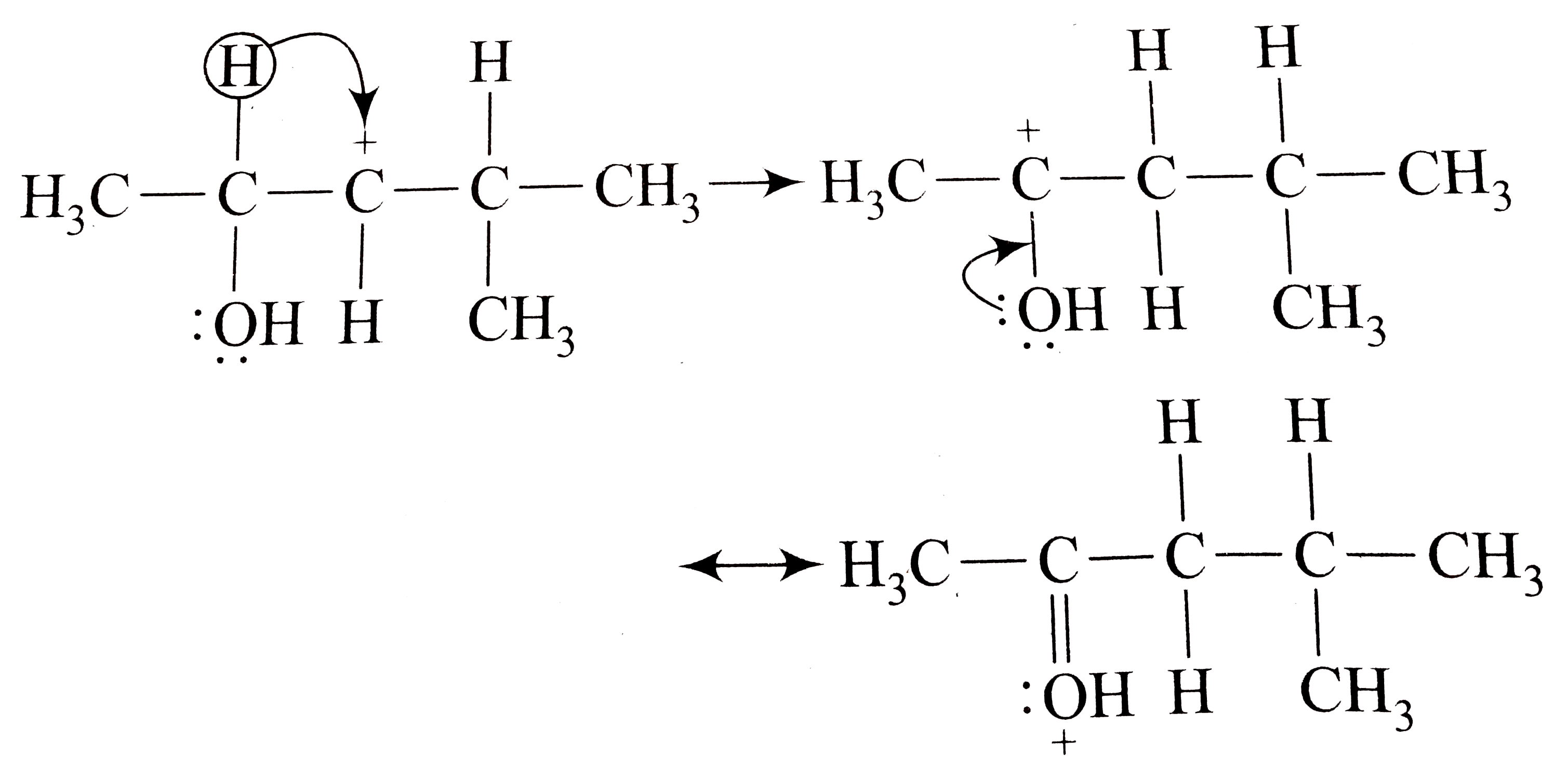In the following carbocation, H/CH3 that is most likely to migrate to the positively charged carbon is :
H3C1−H2∣C∣OH−3⊕C∣H−H4∣C∣CH3−5CH3
A
CH3 at C−4
B
H at C−4
C
CH3 at C−2
D
H at C−2
Video Solution
Text Solution
The correct Answer is:D

In the given carbocation, hydride ion (H−) migrates from C−2 to C−3 because the positive charge apperaring on C−2 is dispersed by the +R effect of the OH group and +I effect of the methyl group.
|
Topper's Solved these Questions
- GENERAL ORGANIC CHEMISTRYBOOK - R SHARMACHAPTER - GENERAL ORGANIC CHEMISTRYEXERCISE - Level - IV
3 Videos
- GENERAL ORGANIC CHEMISTRYBOOK - R SHARMACHAPTER - GENERAL ORGANIC CHEMISTRYEXERCISE - Archives
36 Videos
- GENERAL ORGANIC CHEMISTRYBOOK - R SHARMACHAPTER - GENERAL ORGANIC CHEMISTRYEXERCISE - Level - II
4 Videos
- EQUILIBRIUMBOOK - R SHARMACHAPTER - EQUILIBRIUMEXERCISE - ARCHIVES
69 Videos
- ISOMERISMBOOK - R SHARMACHAPTER - ISOMERISMEXERCISE - Archives
11 Videos
Similar Questions
Knowledge Check
In the following carbocation, H/CH3 that is most likely to migrate to the positve charged carbon is :
H31C−H∣2C| OH−+C3∣H−H∣4C | CH3−5CH3ACH3 at C-4BH at C-4CCH3 at C-2DH at C-2CH3−OH∣C∣H−CN is
AAcetaldehyde cyanohydrinBAcetone cyanohydrinCCyanoethanolDEthanol nitrileIn the following carbocation, H/CH3 that is most likely to migrate to the positively charged carbon is
H31C−H∣2C∣OH−3+C∣H−H∣4C∣CH3−5CH3ACH3 at C−4BH at C−4CCH3 at C−2DH at C−2
